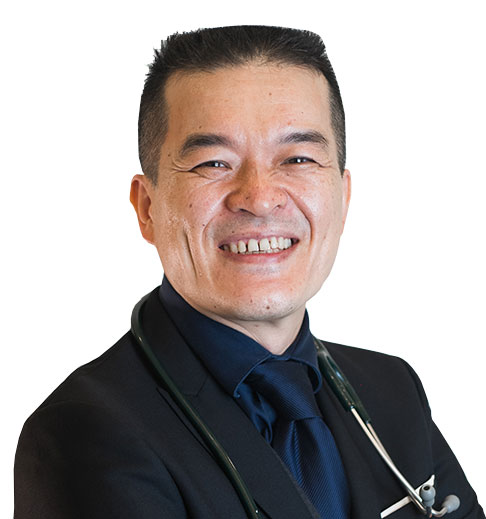What is General Surgery?
General surgery is the surgical specialty that involves surgical care and performing various types of surgical procedures to diagnose and treat a wide range of disorders and diseases, especially those related to the abdomen and the organs connected to it.
Procedures can range from simple surgeries such as an appendectomy, to more complicated operations, such as a coronary bypass. Surgery can be performed in various parts of the body including the breasts, stomach, intestines, liver, appendix, thyroid gland, bile ducts, spleen and rectum. The skin is also treated in cases of burns or trauma.
Common General Surgery procedures
- Abdominal Surgery
A range of procedures on the organs within the abdomen, such as the stomach, intestines, liver, gallbladder, pancreas, and spleen. This includes surgeries for conditions like appendicitis, gallstones, hernias, and colorectal cancer.
- Thoracic Surgery
A range of procedures on the organs within the chest cavity, including the lungs and heart. This may involve surgeries for lung cancer, lung infections, and chest wall deformities.
- Breast Surgery
A range of procedures on the breasts, for conditions such as breast cancer, breast reduction, and breast augmentation.
- Endocrine Surgery
A range of procedures on the endocrine glands, such as the thyroid and parathyroid glands.
- Soft Tissue Surgery
A range of procedures on the skin, soft tissues, and musculoskeletal system, including wound care, skin grafts, and plastic surgery.
Our dedicated teams of experienced multidisciplinary specialists and healthcare professionals work together to provide treatment plans tailored to the needs of our patients on their recovery journey.
Speak to our Specialists today.
Conditions We Treat
Thyroid Disorders
The thyroid gland manufactures hormones that regulate your body’s metabolism. Several different disorders can arise when your thyroid produces too much hormone (hyperthyroidism) or not enough (hypothyroidism).
Find out more
Breast Cancer
Breast cancer is the number one cancer among Singaporean women. It usually occurs when harmful (malignant) cells originate from the cells lining the milk ducts and glands. In advanced breast cancer, cancerous cells can spread through the breast to the rest of the body.
Find out more
Colorectal Cancer
Colorectal cancer is also called colon cancer, and is the cancer of the colon and rectum caused by polyps that grow and become cancerous. Located at the lower part of your digestive system, colorectal polyps usually start as non-cancerous benign or tissue growth on the inner lining of the colon or rectum.
Find out more
Intestinal Obstruction
Intestinal obstruction is a blockage that keeps food or liquid from passing through your small intestine or large intestine (colon). Causes of intestinal obstruction may include scar tiissue in the abdomen that form after surgery, intestinal inflammation, diverticulitis, hernias and colon cancer.
Find out more
Irritable Bowel Syndrome (IBS)
Irritable bowel syndrome (IBS) is a very common chronic disorder of the large intestine or colon that is mainly triggered by the inflammation of the gastrointestinal tract. It causes recurrent diarrhea, abdominal pain and constipation.There is no cure for Irritable bowel syndrome but it can be managed to make the symptoms more comfortable.
Find out more
Kidney Stones
Kidney stones are made from mineral deposits in the urine that are the result of a change in the PH balance of the urine. Calcium stones are the most common type and are the hardest to break down. Kidney stones are created due to several reasons, one of which is inadequate water intake, causing a higher level of mineral deposits in the urine leading to the formation of kidney stones. Other reasons include diseases like gout and inflammatory bowel disease that disrupt the regular chemical balance of urine.
Find out more
Peptic Ulcers
Peptic ulcers develop in the lining of the stomach, lower esophagus, or small intestine. They are sores formed as a result of inflammation and are caused by the bacteria H. pylori. They also occur as a result of erosion from stomach acids. An overproduction of stomach acid can cause digestive juices to penetrate the lining of the stomach and duodenum, creating peptic ulcers.
Find out more
Kidney Failure
Kidney failure is a condition where the kidneys lose their ability to filter fluids and waste from the body. Acute kidney failure happens quickly when the kidneys stop functioning suddenly. Chronic kidney failure happens when the disease has persisted and worsened over a long period of time.
Find out more
Head and Neck Cancers
Head and neck cancers are cancers that occur in the head and neck region.They can occur in the mouth, nose, throat, larynx, sinuses, or salivary glands.
Find out more
Liver Cancer
Liver cancer is the cancer of the liver. The liver is located on the right side of the abdomen and it's function is to filter and detoxify the blood that circulates the body from toxins, and produces bile essential for digestion. Liver cancer occurs when cancer cells develop in the tissues of the liver.
Find out more
Prostate Cancer
Prostate cancer is the third most common cancer among men. The disease occurs when cancer cells form in the prostate, a walnut-sized gland located between the penis and bladder. Prostate cancer in its early stages is usually localized, but it can spread to other organs if left untreated.
Find out more
Stomach Cancer
Stomach cancer is the cancer of the stomach and is also known as gastric cancer. Stomach cancer usually develops in the lining of the stomach and the most common type of stomach cancer is adenocarcinoma.
Find out more
Hernia
A hernia happens when an internal part of the body pushes through a weakness in the muscle or surrounding tissue wall.
Find out more
Medical Tests We Provide
Histopathology
Histopathology is the study and examination of tissue under a microscope to detect and diagnose disease.This can come in the form of a biopsy to detect cancer or benign tissue growth, or the study of changes in cells that may indicate disease.
Find out more
Blood Test
A blood test is an important diagnostic tool used to evaluate your overall health. Blood is drawn and tested for a wide range of disorders, including anemia, infection and leukemia.
Find out more
CT Scan
A computed tomography or CT scan is a non-invasive and painless test that is conducted to obtain a precise image inside of a body. Using a technology that gives a more detailed image than a standard x-ray can, images produced by a CT scan includes the bones, organs and muscle that help in making accurate diagnoses. CT scans are normally requested as a more detailed procedure after a standard x-ray is performed.
Find out more
X-ray
An x-ray is a common and non-invasive imaging test using electromagnetic radiation to view the inside of your body to diagnose and treat many medical conditions. X-rays can be used to detect conditions such as fractures, infections, arthritis, dental decay, osteoporosis, bone tumors, lung infections, breast cancer, blocked blood vessels and digestive tract issues
Find out more
Colonoscopy
Colonoscopy is a procedure that examines the inside of the colon and rectum to investigate gastrointestinal problems such as abdominal pain and bloating. A long, thin, flexible tube called a colonoscope is inserted into the mouth and guided into the colon to check for polyps and tumors.
Find out more
Anoscopy
An anoscopy is a simple procedure that can help identify several conditions and diseases that can affect the lower part of your intestines. These include cancer, tears in the tissue called anal fissures, hemorrhoids (swollen veins around the anus and/or rectum), and rectal polyps.
Find out more
Biopsy
A biopsy is a diagnostic procedure that involves obtaining a sample of tissue or cells for analysis to diagnose a medical condition. It is definitive way to diagnosis most cancers and is often a follow up procedure after imaging tests detect suspicious lumps and tumours. There are several types of biopsies performed to test if abnormalities in your body are caused by cancer or by other conditions.
Find out more
Treatments We Offer
Peptic Ulcer Treatment
Peptic ulcers are sores that develop in the lining of the stomach, lower esophagus, or small intestine. They’re usually formed as a result of inflammation caused by the bacteria H. pylori, as well as from erosion from stomach acids. Treatment depends on the cause of the ulcer and range from antibiotics to proton pump inhibitors, H2-receptor antagonists and anticid medications.
Find out more
Gastritis Treatment
Gastritis is a condition where the stomach lining is inflammed due to infections or stress and is usually treated using medications. The type of medications depends on the cause of the condition. Antacids neutralise stomach acid and provide relief from pain. Proton-pump inhibitors (PPI) and H2 blockers reduce the production of stomach acids. Antibiotics help eradicate H.pylori bacteria.
Find out more
Breast Cancer Treatment
It usually occurs when harmful (malignant) cells originate from the cells lining the milk ducts and glands. There are various treatments available for breast cancer, ranging from surgery to chemotherapy, radiation therapy and hormonal treatment.
Find out more


